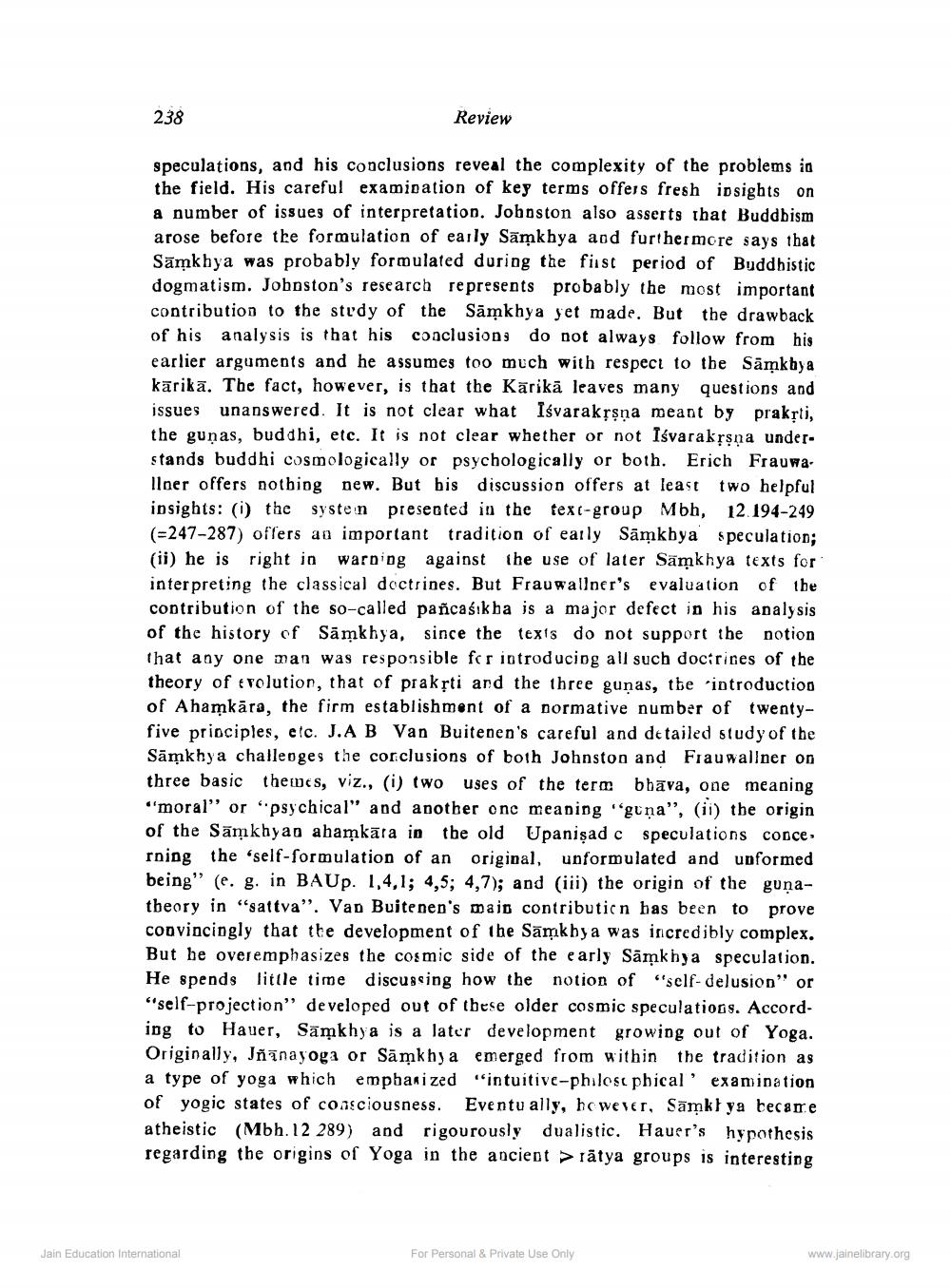________________
238
Review
speculations, and his conclusions reveal the complexity of the problems in the field. His careful examination of key terms offers fresh insights on a number of issues of interpretation. Joboston also asserts that Buddbism arose before the formulation of early Sāmkhya and furthermore says that Samkhya was probably formulated during the first period of Buddhistic dogmatism. Joboston's research represents probably the most important contribution to the study of the Samkhya yet made. But the drawback of his analysis is that his conclusions do not always follow from his earlier arguments and he assumes too much with respect to the Samkhya kārikā. The fact, however, is that the Kārikā leaves many questions and issues unanswered. It is not clear what Isvarakrsna meant by prakrti, the gunas, buddhi, etc. It is not clear whether or not Isvarakrsna understands buddhi cosmologically or psychologically or both. Erich Frauwa. llner offers nothing new. But bis discussion offers at least two helpful insights: (i) the syste in presented in the text-group Mbh, 12. 194-249 (=247-287) offers an important tradition of early Sāmkbya speculation; (ii) he is right in warding against the use of later Samkhya texts for interpreting the classical doctrines. But Frauwallner's evaluation of the contribution of the so-called pañcaśıkba is a major defect in his analysis of the history of Sāmkhya, since the texts do not support the notion that any one man was responsible for introducing all such docirines of the theory of evolution, that of prakști and the three gunas, the 'introduction of Ahamkāra, the firm establishment of a normative number of twentyfive principles, etc. J.AB Van Buitenen's careful and detailed study of the Sāmkhya challenges the corclusions of both Johnston and Frauwallner on three basic themes, viz., (i) two uses of the term bbāva, one meaning "moral" or "psychical" and another one meaning guna", (ii) the origin of the Samkhyan ahamkāra in the old Upanişad c speculations conce rning the 'self-formulation of an original, unformulated and unformed being" (e. g. in BAUp. 1,4,1; 4,5; 4,7); and (iii) the origin of the guņatheory in "sattva". Van Buitenen's main contribution has been to prove convincingly that the development of the Samkhya was incredibly complex. But be overemphasizes the cosmic side of the early Samkhya speculation. He spends little time discussing how the notion of "self-delusion" or “self-projection" developed out of these older cosmic speculations. According to Hauer, Sāmkhya is a later development growing out of Yoga. Originally, Jñanayoga or Sāmkhya emerged from within the tradition as a type of yoga which emphasized "intuitive-philosophical examination of yogic states of consciousness. Eventually, however, Sāmkl ya became atheistic (Mbh.12 289) and rigourously dualistic. Hauer's hypothesis regarding the origins of Yoga in the ancient > rätya groups is interesting
Jain Education International
For Personal & Private Use Only
www.jainelibrary.org




